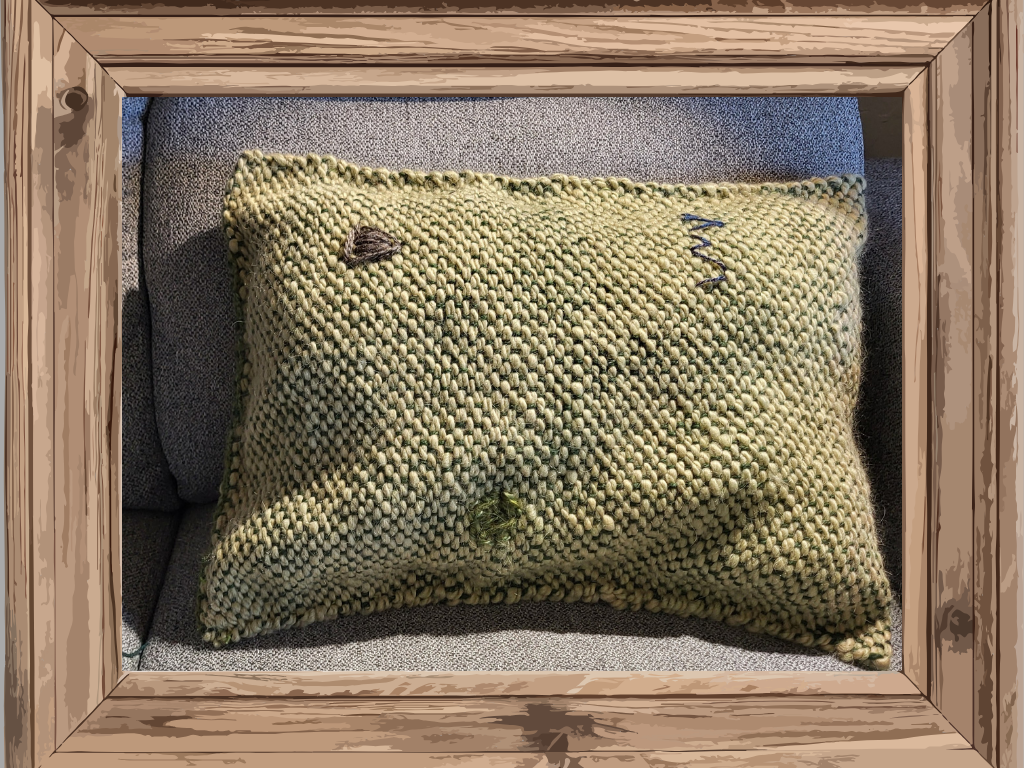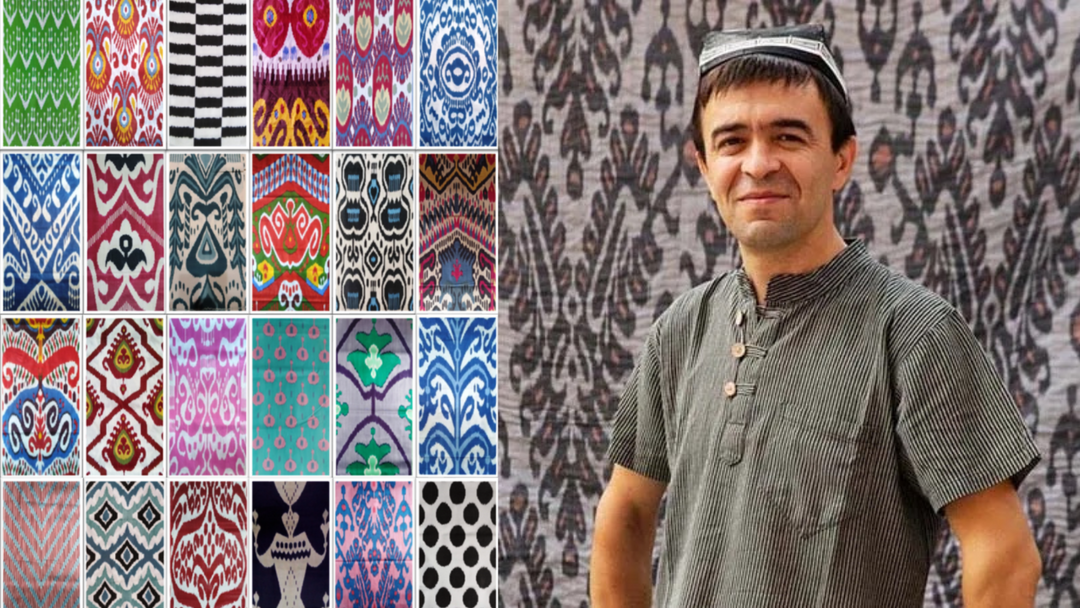Munira Akilova, Designer for Armughon Handicrafts (at far left).
By Rikki Quintana, Owner and CEO
One of the great joys of building the HoonArts business is having direct access to an insider's view of the people, culture, history and more associated with the business. Our new Beyond Tourism blog is designed to give you access to that insider's view. Each issue will contain an in-depth look at some aspect of life along the Great Silk Road. In this inaugural issue, we are delighted to provide a more detailed profile of Munira Akilova, our primary textile expert and coordinator in Tajikistan.
Munira Akilova of Khujand, Tajikistan is the owner of her own handicrafts business, Arinumcrafts, and also acts as handicrafts consultant and designer for Armughon Handicrafts, the handicrafts arm of the Zerafshan Tourism Development Association (ZTDA) in Panjakent, Tajikistan. ("Armughon" means "gift, a reminder of a place" in Tajiki.) Munira began her professional career in economics and spent 14 years as a university teacher, before she decided to leave the university for a while and turn her beloved embroidery hobby into a business. Munira began her work with ZTDA in June 2013. ZTDA implemented several projects on crafts in 2009, 2011 and 2013-2014, with the aim of preserving, nurturing and developing local art traditions and also improving the quality of life for women living in the Panjakenti rural areas by involving them in the local economy. Through these craft projects Armughon began to work with unemployed women from the impoverished mountain regions, and now works with several clusters of women. The trainings ZTDA conducted for the master textile artisans in the Zerafshan Valley on economics, marketing, and design have greatly contributed to their socialization, recovery, and in some regions to the revival of the handicraft sector.
Munira was initially invited to do research on the traditional Tajik crafts of Suzani (embroidery), Quroq (patchwork) and carpets, as part of the ZTDA projects on crafts. During the ZTDA workshops, Munira worked as a craft expert-consultant with artisans while researching through private and museum collections to gather excellent examples of folk art. She first systematized tissue samples and embroidered ornamentation of Zerafshan and then analyzed these traditional textiles in the context of their particular historical situation. All this pre-practical and theoretical work contributed to the development of the first systematic catalogue of Zerafshan patterns and ornaments, entitled "Ornaments of Zerafshan Textile," for which Munira served as Editor. According to Dr. Larisa Dodkhudoeva, Doctor of Historical Sciences and Tajikistan Honored Worker of Arts, "The rich variety of patterns and decorative motifs included in this catalogue give us hope that these precious samples-a kind of evidence of the history and culture of Zerafshan-will raise particular interest among our readers and take their proper place in the world's treasury of textile ornamentation."
Following her original work with ZTDA, Munira became the product designer for Armughon Handicrafts. Whenever she creates a new design, she "always tries to put a part of Zerafshan into it. It means all of [our] products should have Zerafshani ornaments/patterns." She also thinks deeply about how the product will be used, by whom and when, and then focuses on color. As she explained, "Each piece has its own meaning."
 This is the process that led to the development of Munira's product designs that have received the UNESCO Award of Excellence for Handicrafts, a small set of "Tuppi" needlework ornaments by Arinumcrafts, modeled after traditional male and female hats, and a small wall hanging "Marhamat" ("Welcome") for Armughon Handicrafts. In describing the "tuppi" ornaments, Munira had this to say: "Traditionally both men and women should cover their heads. This was the main reason that they started to decorate the hats in different ways. Even from childhood they had the skull caps. The skull caps had a square and round shape. Embroiderers used to put meaning, their wishes on each piece of artwork.
This is the process that led to the development of Munira's product designs that have received the UNESCO Award of Excellence for Handicrafts, a small set of "Tuppi" needlework ornaments by Arinumcrafts, modeled after traditional male and female hats, and a small wall hanging "Marhamat" ("Welcome") for Armughon Handicrafts. In describing the "tuppi" ornaments, Munira had this to say: "Traditionally both men and women should cover their heads. This was the main reason that they started to decorate the hats in different ways. Even from childhood they had the skull caps. The skull caps had a square and round shape. Embroiderers used to put meaning, their wishes on each piece of artwork."Female" tuppi ornament above; "male" tuppi ornament, right.

For example, the traditional men's hat has such meanings: 4 sides of the world, 4 periods of life, 4 Holy khalifs. White black, two poles, two principles. Four white cell-cycle, the sun sign, the sign of the black square of the field of space, darkness. Vortex is formed, which is freezing and lost look, and you go to the funnel-approximating peace and harmony. The traditional women's hat represents beauty & life. Mostly flowers & birds are embroidered on it. In the past, embroidering protectors were a symbol of health and happiness." Many men and women in Tajikistan continue to wear these traditional hats for regular daily wear.

A modern treasure chest of tuppis for women (left); Bakhriddin Isamutdinov, wearing his own tuppi at recent Handicrafts Fair in Dushanbe (right).

The "Marhamat" ("Welcome") mini-wall hanging embodies the traditional suzani embroidery art form.
As Munira explained, "Hanging embroideries on walls has a long history in Tajik art, especially in the Sughd region (the northernmost province of Tajikistan). The colours used in this wall decoration are typical for the Panjakent region. White represents the purity of the soul when we are born, black represents darkness and red with pink symbolizes life and birth. Together they carry the meaning of the duality of life like the sun and the moon. Every day has light and darkness, every life has good and bad, every human has better and worse days. The teapot embroidering in the middle represents hospitality. And also the long tea drinking traditions of Tajikistan. The surrounding embroiderings with tree elements carry the symbols of a long life, good health and inner growth. The five-leaf flowers inside the bigger round flowers represent humans protected and surrounded by the sun. In Tajik art a circle and the sun symbolize eternity, paradise and love. The frame is made of traditional patchwork called tumar, that has a traditional meaning of keeping safe from the evil eye and expresses the wish of protecting the home." Munira also produces framed embroidery art and other small ornamental pieces for Arinumcrafts, working with a group of young women from Panjakent and other regions of Sughd province.

Several small suzani-styled wall hangings and several combination ikat patchwork and hand embroidery pillow covers designed by Munira were selected to participate in the 2015 Santa Fe International Folk Art Market (via the UNESCO Award of Excellence booth), making her the first ever Tajik artisan represented in the Santa Fe Market. She is also busy working on direct application to the juried 2016 Santa Fe International Folk Art Market, the largest international market of its kind in the world. As Munira explained, "We want to 'Revive the Culture & Build the Future.' We are transforming traditional textile arts into new products. We are trying to revive old patterns and techniques and use them in new marketable products which will help to build the future."
Munira works with a group of young women from different rural regions in the Zerafshan Valley, including Panjakent, Jabbor Rasulov, and Babajan Gafurova. Recently, a new group of disabled women have also begun to work with Armughon Handicrafts, bringing the total number of participants to about 25. Many of these women have been forced to take care of themselves and their children, due to the worldwide recession and the fact that many Tajik men have left the country to seek work in Russia, and often end up not being able to send any money home.
Munira's own love of embroidery began when she was a child of 11 or 12, in the early 1990's. During summer break, her class was sent to help at a grape farm. The teacher in her "Labor" class (roughly equivalent to the traditional American "Home Economics" class, which is now called the "Technology" class in Tajikistan), recognized her sewing and creative abilities, and asked her regular classroom teach to allow her to stay in the Labor class. There was also a Russian "Labor" teacher who taught Munira her first stitches of long stitch embroidery. At that time, Chinese dresses with embroidery were very popular, so she started embroidering in the Chinese style, with flowers and 2 color leaves. After that first magical summer, she started to buy different magazines and books about sewing and began collecting information from books and even encyclopedias. Her favorite work from this early time period was a hand-embroidered handkerchief that she made for her host mom during her first exchange visit to the US as a teenager.

Later she began to embroider framed pictures as gifts for her school and her closest friends, but in her own words, "they were very childish & simple."
During her 25 years of embroidering experience, Munira has worked her magic in a variety of forms, including accessories, clothing, bed sets, etc. Finally she made a decision that for the rest of her life she would always include framed embroidery. "This way, embroidery will have a longer life." Munira decided to make embroidery the main focus of her life after a serious illness, when only the creative work of embroidery restored her health and passion for life.
Not satisfied with simply trying to develop new handicraft products for sale, Munira is also constantly looking for more ways to expand the reach of her work. She has offered special embroidery training classes to many women, often without charge, and has even begun teaching classes to very young girls. She was recently delighted to learn that some of her students in the Panjakent area have begun taking on their own embroidery students, also for free, because "[Munira] taught us for free." When asked why she likes to teach, she said, "It seems teaching is my mission. I like working with the worst student in the class. It's magical when you see the change in them, when they start out feeling that they are very far from others, and you begin to work with them. It's like you are giving them the power to believe in themselves. Their eyes begin to shine. As for teaching art, it's opening eyes to the world of beauty. Students begin to look at life and the world through the heart's eye. I'm sure it influences their health and happiness."
Munira is also looking for ways to take her work even further. Just recently, she put together a grant proposal ("Revive the Culture-Build the Future") as part of an international competition to create a permanent educational center affiliated with a rural high school to train students in the traditional handicraft arts, as well as related business principles, which would in turn become an economic hub for the rural village. While the project was not selected for funding in the competition, finding a way to create this educational center is her personal dream. We have no doubt that she will ultimately succeed.
We just learned that Munira is also part of an exciting new handicrafts project in Tajikistan that has received funding: "Women's entrepreneurship as a mechanism for financial stability and welfare." She'll be working with our partners the Tourism Development Center of Tajikistan ("TDC") and the Union of Craftsmen of Tajikistan ("UTC"), and others to establish two regional women's collectives to engage rural women and girls from families with absentee migrant workers (primarily in Russia) in the production of handicraft products, improving quality and developing new products for international markets, training in business skills and electronic media, as well as raising their understanding of their legal rights. This new project will serve as a catalyst for women's entrepreneurship and economic development, at a time when economic conditions are especially perilous in Tajikistan. The economy has become dangerously dependent upon remittances from migrant workers (approximately 50% of the GDP), while new regulations on labor migration imposed by the Russian government in early 2015 have a negative impact on the already deplorable situation in Tajik families.
In her "spare" time, Munira is also now busy working with ZTDA to put together a special exhibition of Zerafshan textile products at a museum in Dushanbe. Stay tuned for more on this upcoming exhibition. She is also studying for a second university degree in Graphics and Design.
For her work with rural women, Munira was recently nominated for the 2015 Women's World Summit Foundation (WWSF) Prize for Women's Creativity in Rural Life. WWSF is an international, non-profit, humanitarian NGO, serving the implementation of women's and children's rights and the UN development agenda. This prize honors women and women's groups around the world exhibiting exceptional creativity, courage and commitment for the improvement of the quality of life in rural communities.
Munira's endless desire to make a difference is inspiring. It is not at all unusual to find her working with a tailor at home after midnight Tajikistan time, while sending instant messages to Rikki in Albuquerque about ongoing projects at the same time. In addition to all her textile work, Munira teaches economics at the university in Khujand during the daytime to help make ends meet during these tough economic times in Tajikistan. Her passion for textiles is her way of building a better future for her country and her own family, including her three children, ages 7, 14 1/2 and 17 1/2.
We are honored to count Munira as one of our partners at HoonArts, and delighted to bring her unique Zerafshan designs to the US for the first time. You can follow Munira's work at Armughon Handicrafts on their Facebook page.
Thank you for joining us on this first exploration of Beyond Tourism. If you have enjoyed it and would like to continue to explore the Great Silk Road from an insider's perspective, sign up for our Beyond Tourism email list. If you have friends who you think might also be interested, please forward this email to them.
Warmest regards,
Rikki Quintana
Hoon Arts
rikkiquintana@hoonarts.com







Leave a comment